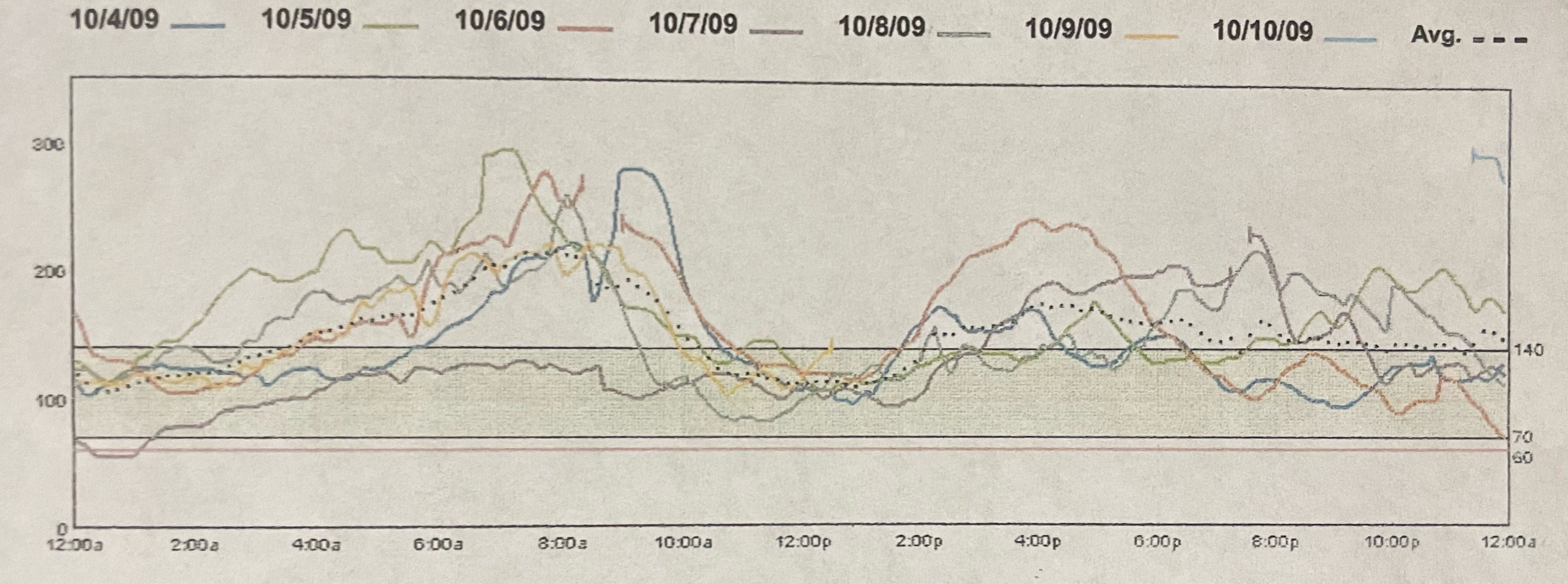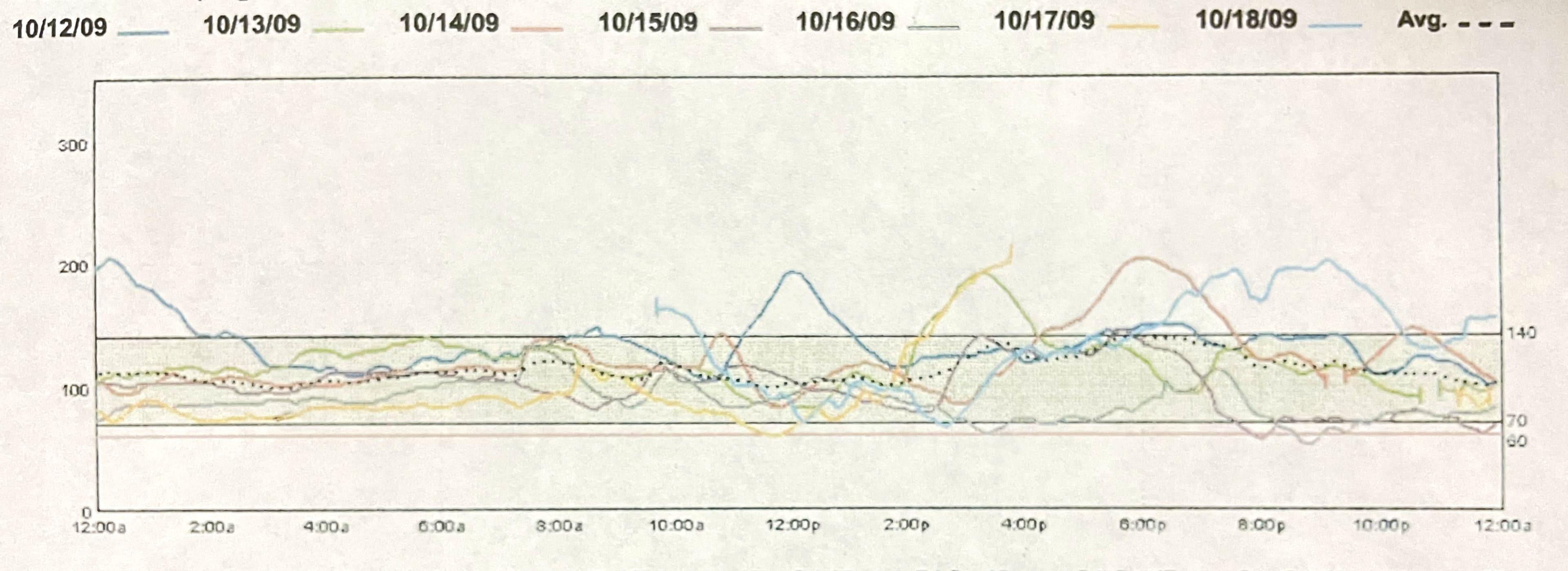Managing Diabetes with Confidence
Living with diabetes requires careful attention to blood sugar management. Our prebiotic soluble fructan fibers provide a solution that won't spike your glucose levels while supporting your overall metabolic health.
Understanding Diabetes
Blood glucose is a precious fuel for our bodies—it's something we need to give us energy. But too much of it can be dangerous. High blood sugar levels slowly erode the ability of cells in the pancreas to make insulin, which is what the body uses to metabolize carbohydrates taken into the body. Over time, the pancreas is permanently damaged, we end up with diabetes, and have to take insulin to do the job our body no longer has the ability to perform.
Nobody wants to be diabetic. It's a dangerous condition that can cause a lot more complications in the long term than most of us want to deal with, such as kidney disease, strokes, heart problems, blindness, immune system suppression, erectile dysfunction, poor circulation, neuropathy.
Diabetes is a health menace becoming more and more prevalent with our modern diets. Diabetes comes in two forms. When your blood sugar is too high it is called hyperglycemia. When your blood sugar is too low it is called hypoglycemia.
When your blood sugar level is above 140 mg/dL it is called hyperglycemia. Hyperglycemia may cause frequent urination, shortness of breath, increased thirst, blurred vision, fatigue, and difficulty breathing. Over a long period of time hyperglycemia can cause organ failure and even death.
When your blood sugar level is below 70 mg/dL it is called hypoglycemia. Hypoglycemia can cause shortness of breath, increased thirst, dryness in the mouth, shakiness, sweating, rapid heartbeat, hunger, dizziness, and confusion. Seizures, coma, and death can come over time with hypoglycemia.
Managing Blood Sugar Through Diet
Of the different components of nutrition—carbohydrates, fats, and proteins—carbohydrates have the greatest influence on blood sugar levels. Keeping sugar levels closer to normal can prevent many of the complications of diabetes. But it's pretty hard to totally eliminate all sugar from our diets—it's in almost everything. But it is always good to try to keep our sugar intake down. There are also dangers in using artificial sweeteners. And they don't always do the trick, anyway.
To keep blood sugar levels in check, we need to make healthy food choices and exercise regularly. One way to control our carbohydrate (especially sugar) intake is to utilize the glycemic index, a ranking that attempts to measure the influence that each particular food has on blood sugar levels. It takes into account the type of carbohydrates in a meal and its effect on blood sugar. Foods that are low on the glycemic index appear to have less of an impact on blood sugar levels. High glycemic index foods generally make blood sugar levels higher.
Glycemic Index
Glycemic Index (GI) is a ranking of foods based on the immediate effect on blood sugar levels. As the number gets smaller, there is a corresponding decrease in demand for insulin.
Carbohydrate Management for Diabetics
People who have Type 1 or Type 2 diabetes need to be especially careful about the amount of total carbohydrates they take in every day. So it's a good idea to count your carbs. Get a book that gives you the nutritional content of foods (some will even list popular restaurant meals, or you can sometimes find those online). You will see the fat, protein and carbohydrate content listed and can make healthy selections to not only keep your carbs low, but your fats low, too (unless you're one of those lucky ones who can eat and eat and not gain an ounce).
A good rule of thumb is to limit yourself to under 200 grams of carbohydrates per day. And if most of those can be complex carbohydrates (such as whole grains, fruits and vegetables), so much the better. The body digests complex carbs slowly, so they provide a steadier source of energy.
Our Diabetic-Friendly Solutions
Frē® Gold is manufactured from the natural food fructans and is a prebiotic soluble dietary fiber with a zero gycemic index.
So, one way to lower calorie intake and lower glycemic index is to switch to Frē® Gold. Sprinkle it on cereal for breakfast in the morning or vegetables and fruits anytime use in any desired drink or water.
Daily levels of Blood Sugar for a Diabetic Taking Insulin
Data (mg/dL)

Duration Distribution (hh:mm)
Sun Oct 4
Mon Oct 5
Tue Oct 6
Wed Oct 7
Thu Oct 8
Fri Oct 9
Sat Oct 10
Average
| Range | Sun Oct 4 | Mon Oct 5 | Tue Oct 6 | Wed Oct 7 | Thu Oct 8 | Fri Oct 9 | Sat Oct 10 | Average |
|---|---|---|---|---|---|---|---|---|
| Above 140 | 8:40 36% | 15:40 65% | 11:30 48% | 6:15 26% | 13:10 55% | 6:25 51% | 0:35 100% | 62:15 47% |
| Within (70 - 140) | 15:20 64% | 8:20 35% | 11:55 51% | 16:10 68% | 10:50 45% | 6:10 49% | 0:00 0% | 68:45 52% |
| Below 70 | 0:00 0% | 0:00 0% | 0:00 0% | 1:20 6% | 0:00 0% | 0:00 0% | 0:00 0% | 1:20 1% |
Without Prebiotic Fructans
Daily levels of Blood Sugar for a Diabetic Taking Frē Gold
Sensor Data (mg/dL)

Duration Distribution (hh:mm)
Mon Oct 12
Tue Oct 13
Wed Oct 14
Thu Oct 15
Fri Oct 16
Sat Oct 17
Sun Oct 18
Average
| Range | Mon Oct 12 | Tue Oct 13 | Wed Oct 14 | Thu Oct 15 | Fri Oct 16 | Sat Oct 17 | Sun Oct 18 | Average |
|---|---|---|---|---|---|---|---|---|
| Above 140 | 6:25 27% | 2:05 9% | 3:55 16% | 0:20 1% | 0:00 0% | 1:30 9% | 5:50 41% | 20:05 13% |
| Within (70 - 140) | 17:35 73% | 21:40 91% | 19:50 84% | 22:15 93% | 21:45 91% | 14:00 85% | 8:15 57% | 125:20 84% |
| Below 70 | 0:00 0% | 0:00 0% | 0:00 0% | 1:25 6% | 2:15 9% | 1:00 6% | 0:15 2% | 4:55 3% |
With Prebiotic Fructans
Comparative Blood Sugar Analysis
Comparison: Before vs. After WITH Frē® Gold Implementation
WITHOUT Frē® Gold
Oct 4-10, 2009 (7 days)
WITH Frē® Gold
Oct 12-18, 2009 (7 days)
Key Improvements with Frē® Gold
Clinical Significance
Primary Benefits
- Dramatic hyperglycemia reduction: 72% decrease in time spent above target levels
- Enhanced glycemic stability: 62% improvement in time within therapeutic range
- Improved metabolic control: More predictable glucose patterns with Frē® Gold
Long-term Implications
- Cardiovascular protection: Reduced risk of diabetic complications
- Cognitive benefits: Stable glucose levels support better mental clarity
- Overall health: Enhanced quality of life through better glucose management
Key Insight: The implementation of Frē® Gold prebiotic fructans resulted in a remarkable transformation from erratic blood sugar patterns to steady, well-controlled glucose levels, demonstrating the significant therapeutic potential of targeted prebiotic interventions in diabetes management.
Comparative Nutritional Analysis
Common Table Sugar
Sucrose
- Carbohydrates: 4 grams per teaspoon
- Calories: 17 calories
- Glycemic Index: 68
- Insulin requierd to digest
High fructose corn syrup
- Carbohydrates: 3 grams per teaspoon
- Calories: 14 calories
- Glycemic Index: 58
- Insulin requierd to digest
Frē® Gold
- Carbohydrates: 4 grams per teaspoon
- Calories: No calories
- Glycemic Index: Zero
- Insulin requirement: No insulin needed to digest
Health Benefits Summary
Frē® Gold helps support a diabetic diet and helps avoid diabetes, high blood sugar and low blood sugar.
Sweet Solutions for Diabetes Management
Discover diabetic-friendly sweeteners that support your health goals.
